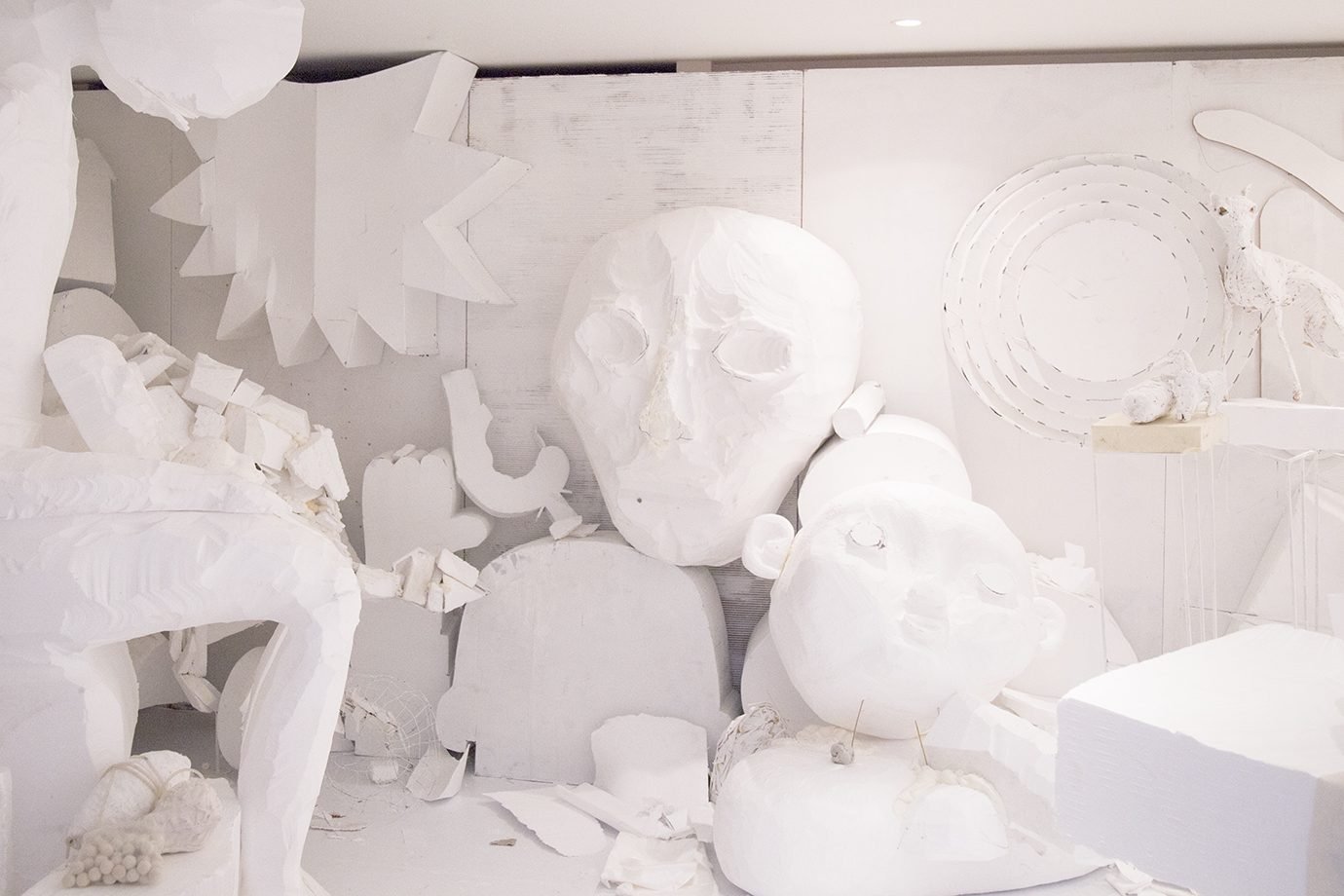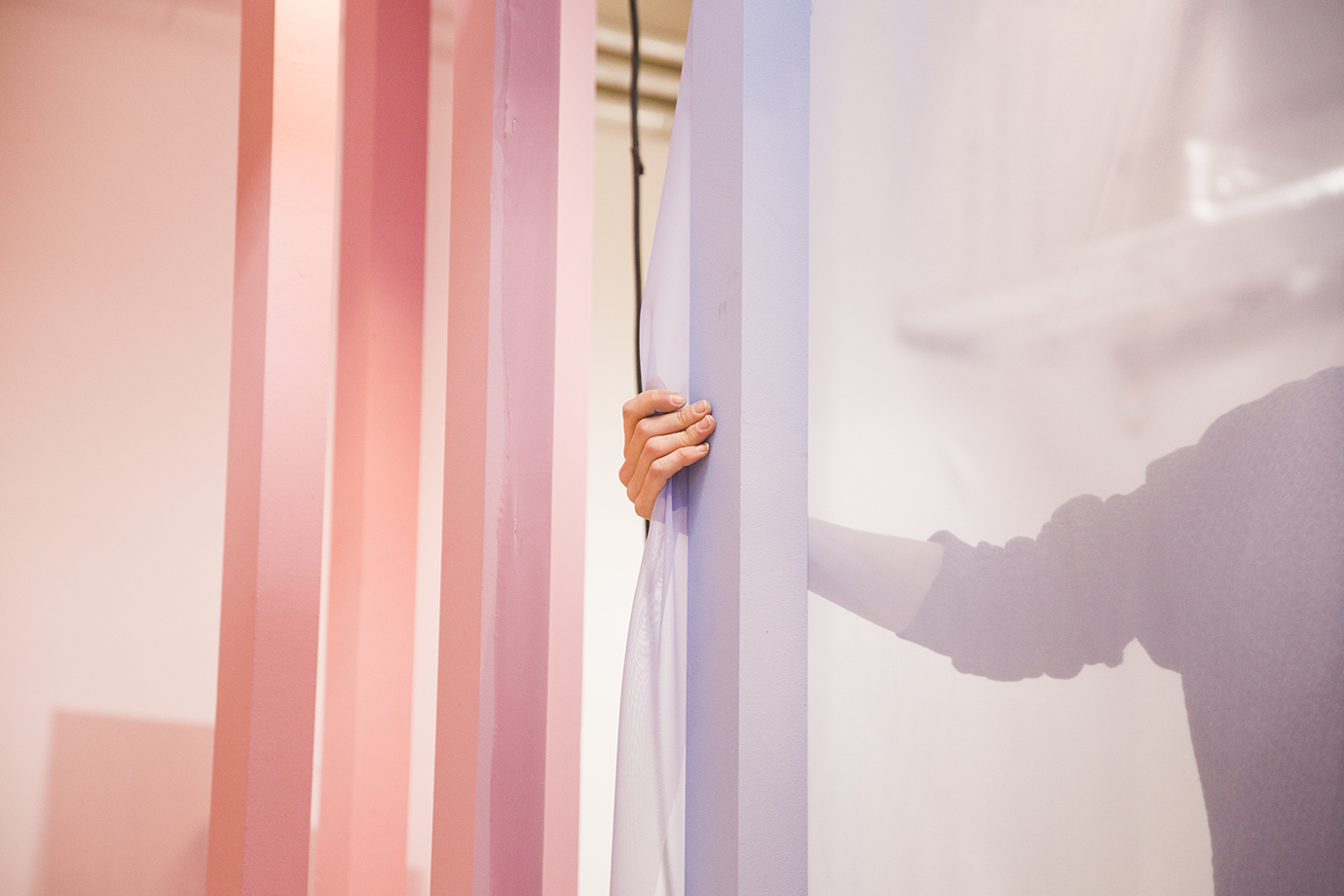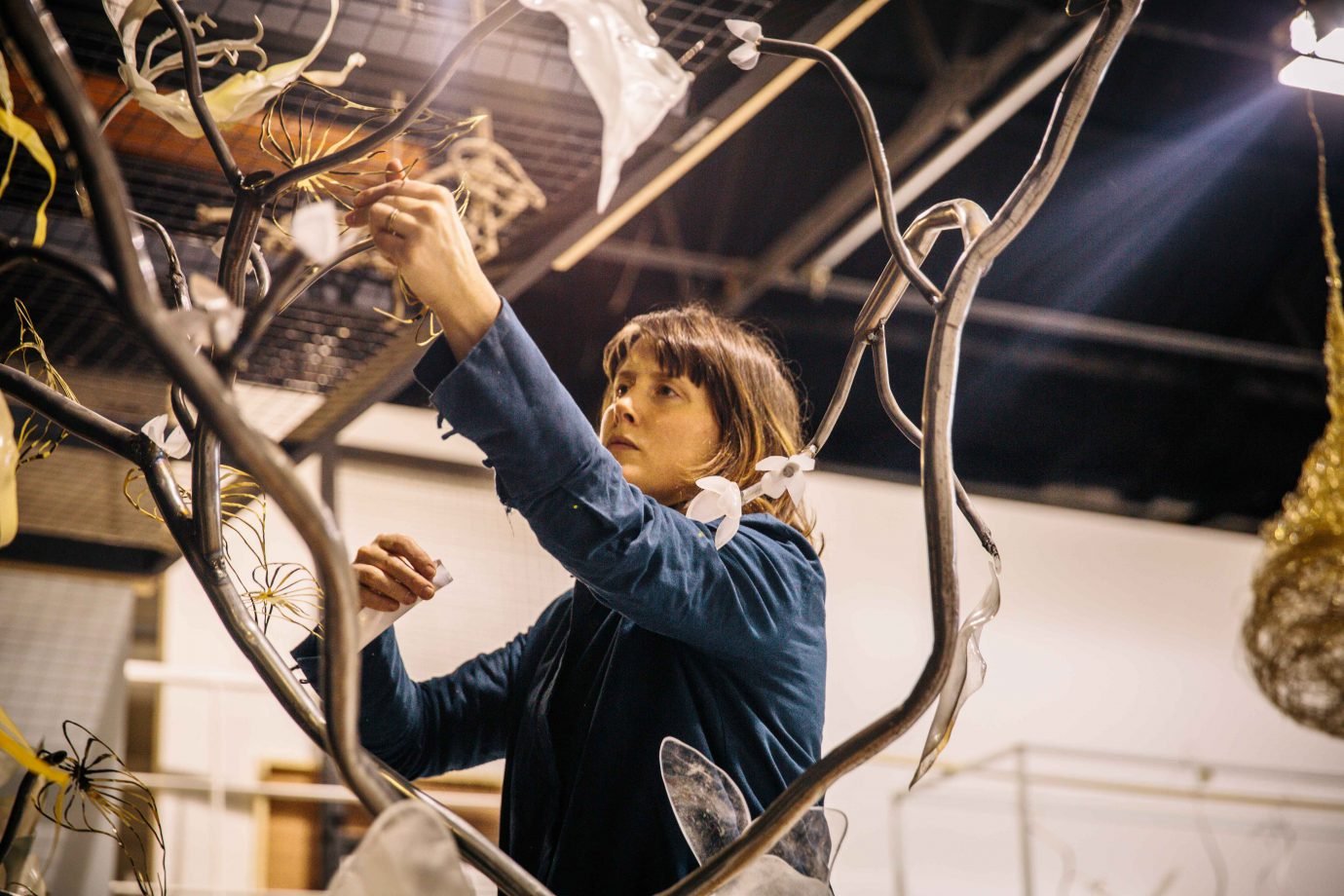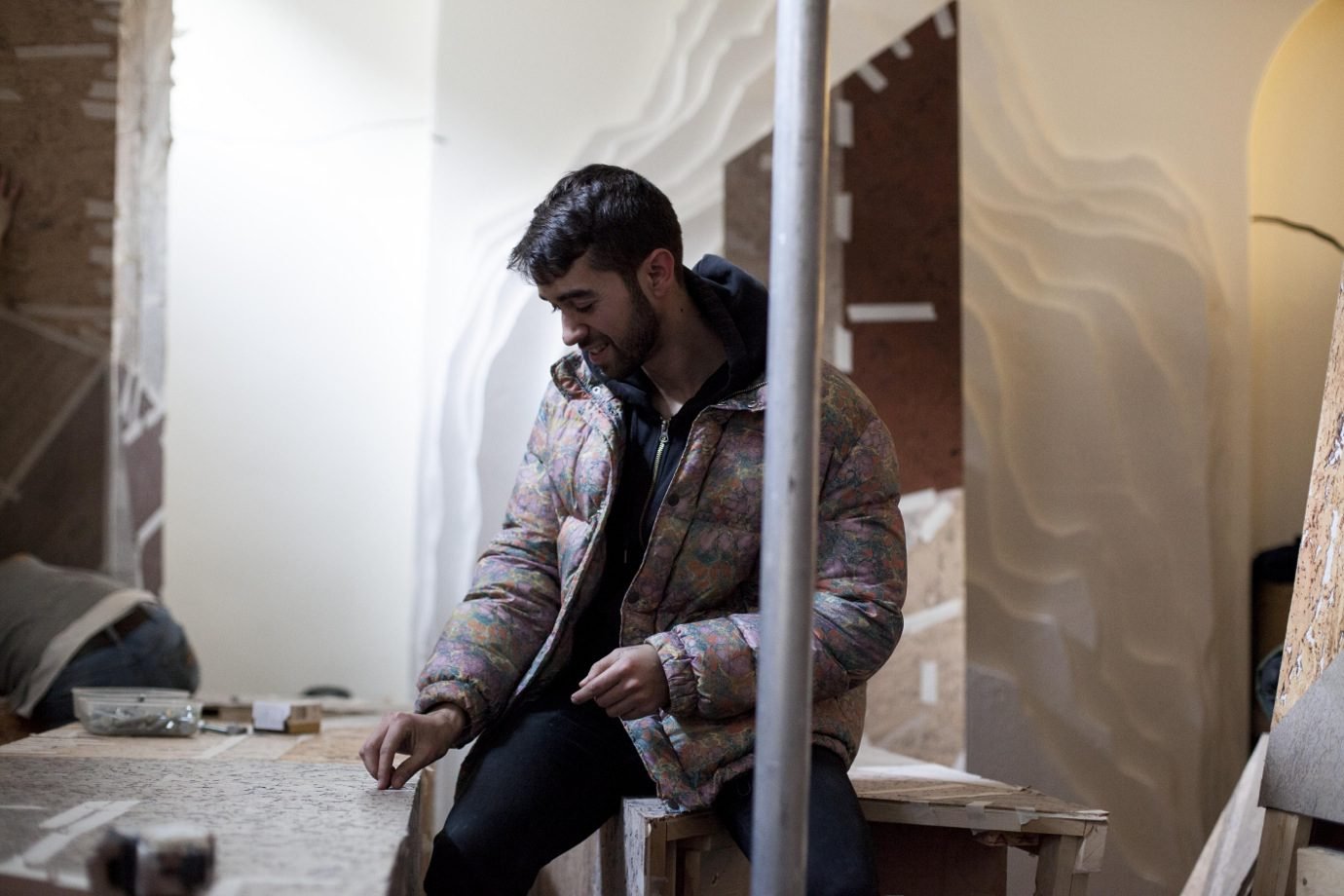“THE HARDEST PART WAS KNOWING WHEN TO STOP.”
Could you explain the project a bit as well as your involvement?
Miguel Bento: The Widow Series is a project that started last year to support young innovative creatives. This year they are doing it with Streeters and FKA Twigs, and each set designer created a different room. Twigs came up with the concept of having twelve different rooms each representing one of the horoscopes, and each one of us was allocated one for the show. We were completely free in terms of what we could do, which is great, as it almost never happens like this.
Gary Card: For me this project is a great opportunity to show exactly what set design actually entails, and the sheer level of detail and mass amount of stuff that we make for a shoot. There is so much stuff that might not get shot, or which gets edited out in final images. People don’t often get a chance to see all the work that’s involved in doing anything like a campaign or a shop window. This was an opportunity for me to go wild and do something that’s super detailed, super layered and embrace all the things that I love but don’t usually get to experiment with. I love things like weird gangly creatures, haunted looking men, strange distorted Henry Moore looking characters. I wanted to take all my favorite influences, people like Louise Bourgeois, Hans Bellmer, Paul McCarthy and create a space that needs to feel like it was ‘discovered’. Rather than it being too curated, I wanted it to feel like a real studio, as though all of these things were piled up on each other with little thought to their arrangement. I wanted it to feel claustrophobic, intense and kind of foreboding. It’s meant to make people not want to stay in the space for long, even though there are so many things to be discovered.
Was there something you wanted to achieve in particular?
Miguel Bento: My zodiac is Aquarius. Starting with the premise of the increasing value of space – and how living in London we are being trained to live in smaller and smaller spaces – I wanted to play with the idea of joining and separating things within my installation. The fact that we don’t have enough space really affects me on a personal level. We live in a place where we are constantly pushed to live more compact. We don’t have enough space to do anything. We always try to cram as much stuff into a space as possible and this is always something that I look at and explore.
They are outlines of different houses, which join together to form one space. It makes me think of the ‘jumbling up’ that we live in, and the fact that it’s see-through makes it completely spacious even though it’s enclosed.
“IN LONDON, WE DON’T HAVE ENOUGH SPACE TO DO ANYTHING.”
Gary Card: The zodiac I got was Scorpio. I love the feeling of storage spaces and artist studios as well as construction sites. I was brought up on these things; working with my father. I’m very fascinated in the way things are constructed, and it’s something I’ve tried to embrace in this project. It’s about the mechanics of how something is done. Everything in the space is Polystyrene and usually we hide that with a finish like jesmonite or porcelain, to change the nature of it. What we’ve tried to do here is celebrate the beauty of the material and its texture; the way we cut and join it, and the layered composition of how that happens. It’s about exposing the process.
How did you go about achieving your imagined set?
Miguel Bento: I try to build it as much as I can, but there are always limits like time and budget. I had set builders build the framework for the structures and my assistants and I wrapped the structures and applied the acrylic sheets on site.
What was the most difficult aspect of this project?
Miguel Bento: I think the hardest part was not having a brief to start with, because when you have a brief, you might moan about it, but at least there’s a structure or a guideline. When there’s no brief you could do anything – there are no restrictions. For me to focus on one point and think of something is much harder.
Gary Card: The hardest part was knowing when to stop. You have so many ideas and so many things you want to say. Being able to get to the meat and stay true to the center of the concept – not stray too far from it – is something you have to be conscious about. It’s also difficult to manage the budget and stretch the resources we have available to us to as far as we could. Exploring our concept to its fullest extent was a real challenge.










